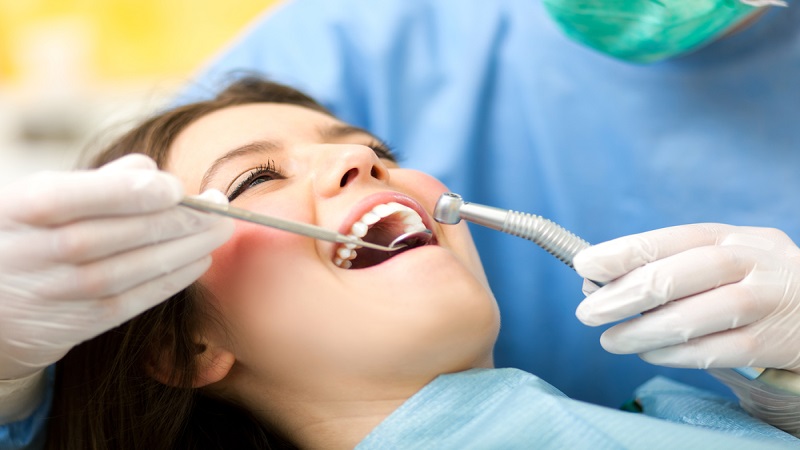Good dental health is crucial not only for a beautiful smile but also for overall well-being. newssyc.in/category/dental, Poor oral hygiene can lead to various health issues, from cavities and gum disease to heart disease and diabetes. In this article, we explore the basics of dental care, from daily habits to advanced treatments, and how individuals can maintain a healthy mouth for life.
Daily Oral Hygiene Habits
Proper dental care begins at home. Developing daily oral hygiene routines can prevent most dental problems, such as tooth decay and gum disease. Here are essential practices that form the foundation of good dental health:
Brushing Techniques
Brushing twice daily is critical for maintaining oral hygiene. However, the technique used is equally important. Use a soft-bristled toothbrush and fluoride toothpaste, brushing at a 45-degree angle to the gums. Spend at least two minutes, ensuring you clean all surfaces of your teeth, including the tongue, which harbors bacteria.
Flossing and Interdental Cleaning
While brushing cleans the outer surfaces, flossing reaches the spaces between teeth that a toothbrush cannot. Flossing daily removes plaque and food particles trapped between teeth, reducing the risk of cavities and gum inflammation. Interdental brushes can also be effective for people with larger gaps between their teeth.
Rinsing with Mouthwash
Using an antimicrobial mouthwash helps in reducing bacteria and maintaining fresh breath. Fluoride rinses also strengthen enamel and make teeth more resistant to decay. However, it should not replace brushing and flossing but rather complement them.
Professional Dental Care
In addition to home care, professional dental visits are necessary for maintaining dental health. Dentists can diagnose and treat issues that are not visible to the naked eye, such as cavities, gum disease, and even oral cancer.
Routine Dental Check-ups
Experts recommend visiting a dentist at least twice a year for routine check-ups. These appointments typically involve a professional cleaning, where plaque and tartar are removed. X-rays may also be taken to monitor any potential underlying problems, such as bone loss or impacted teeth.
Dental Cleaning and Scaling
Dental scaling is a procedure that removes hardened plaque (tartar) from the surface of teeth. Regular cleaning helps to prevent gum disease and maintain oral hygiene at a higher level than what is possible with brushing alone. newssyc.in/category/dental
Common Dental Problems and Treatments
Understanding common dental issues and their treatments is crucial for taking timely action. Here are some of the most frequent problems patients face, along with treatment options:
Cavities (Tooth Decay)
Cavities occur when bacteria in the mouth produce acid that erodes the tooth enamel. This can cause pain, sensitivity, and even tooth loss if untreated. The primary treatment for cavities is fillings, where the decayed part of the tooth is removed, and the cavity is filled with a material like composite resin, silver amalgam, or gold. newssyc.in/category/dental
Gum Disease (Periodontal Disease)
Gum disease is a bacterial infection that affects the gums and bone supporting the teeth. Early stages of gum disease, known as gingivitis, can be reversed with proper care. Advanced stages, known as periodontitis, require more intensive treatments, such as deep cleaning (scaling and root planing), antibiotics, and sometimes surgery to restore oral health.
Tooth Sensitivity
Tooth sensitivity is a common issue where individuals feel discomfort or pain in their teeth when exposed to hot, cold, or sweet stimuli. Treatments include using desensitizing toothpaste, fluoride treatments, or dental procedures like bonding or gum grafts for severe cases.
Tooth Whitening Procedures
Tooth whitening has become one of the most popular cosmetic dental treatments. It involves using bleaching agents to remove stains and discoloration from the surface of the teeth. Options include in-office treatments with more potent solutions or at-home kits that gradually whiten teeth over time.
Modern Dental Technologies
Advances in dental technology have revolutionized the way dental care is provided. From more accurate diagnostics to less invasive treatments, modern innovations are enhancing both patient experience and outcomes.
Digital X-rays
Traditional X-rays expose patients to higher levels of radiation. Digital X-rays, on the other hand, offer a safer, faster, and more accurate alternative. They allow for instant imaging and better image quality, making it easier for dentists to diagnose problems. newssyc.in/category/dental
Laser Dentistry
Laser dentistry is an innovative technology used for various dental treatments, including gum reshaping, treating cavities, and whitening teeth. It is minimally invasive and reduces pain and healing time, providing a more comfortable experience for patients. newssyc.in/category/dental
3D Printing in Dentistry
3D printing has found applications in dental care by producing crowns, bridges, and even dentures with extreme precision. It allows for faster and more accurate fabrication of dental prostheses, which improves the fit and comfort for patients. newssyc.in/category/dental
Cosmetic Dentistry: Improving Smiles
Cosmetic dentistry focuses on improving the appearance of a person’s teeth, gums, and overall smile. With increasing demand for aesthetic treatments, here are some of the most sought-after cosmetic dental procedures:newssyc.in/category/dental
Dental Veneers
Veneers are thin shells made from porcelain or composite resin that are bonded to the front surface of the teeth. They are used to cover imperfections such as chips, cracks, gaps, or discoloration, giving patients a flawless smile.
Invisalign (Clear Aligners)
Invisalign is a popular alternative to traditional braces for correcting misaligned teeth. Clear aligners are nearly invisible, removable, and comfortable. They gradually shift the teeth into their desired positions without the hassle of metal brackets and wires. newssyc.in/category/dental
Dental Implants
Dental implants are a permanent solution for missing teeth. They involve inserting a titanium post into the jawbone, which acts as an artificial tooth root. A crown is then placed on top of the implant, restoring both function and aesthetics.
Pediatric Dental Care
Children require specialized dental care due to the unique developmental stages of their teeth. Establishing good oral habits early on sets the foundation for a lifetime of healthy teeth.
Preventing Early Childhood Cavities
Tooth decay is the most common chronic disease in children, often resulting from poor diet and lack of proper oral care. Limiting sugary foods and drinks, brushing twice daily with fluoride toothpaste, and regular dental check-ups can prevent early cavities.
Dental Sealants
Dental sealants are a protective coating applied to the chewing surfaces of a child’s back teeth (molars). They form a barrier against food and plaque, significantly reducing the risk of cavities in these vulnerable areas.
Orthodontic Evaluation
By age seven, children should have their first orthodontic evaluation to identify any potential misalignments in the teeth or jaw. Early intervention can often prevent more complex treatments in the future, such as braces or corrective surgery.
Trends in Dental Care
Dental care is continually evolving with new trends and practices aimed at improving patient outcomes and enhancing aesthetics. Here are some emerging trends:
Holistic Dentistry
Holistic dentistry takes a whole-body approach to dental care, emphasizing the connection between oral health and overall well-being. It uses non-toxic materials for treatments and focuses on prevention through diet and lifestyle changes. Reade More’ finalizet
Teledentistry
Teledentistry allows patients to consult with dental professionals remotely via video conferencing. This has become especially popular during the COVID-19 pandemic and offers a convenient solution for those unable to visit a dentist in person.
Sustainable Dentistry
Sustainable dental practices are gaining traction as more patients seek eco-friendly options. These practices include using biodegradable or reusable materials, reducing waste, and implementing energy-efficient technologies in dental offices.
Conclusion: Prioritizing Dental Health for a Better Future
Maintaining good dental health requires a combination of daily habits, professional care, and staying informed about the latest advancements. As dental technologies and trends continue to evolve, patients have more options than ever for achieving a healthy, beautiful smile. By focusing on preventive care and addressing issues promptly, individuals can ensure their oral health contributes to their overall well-being for years to come.


